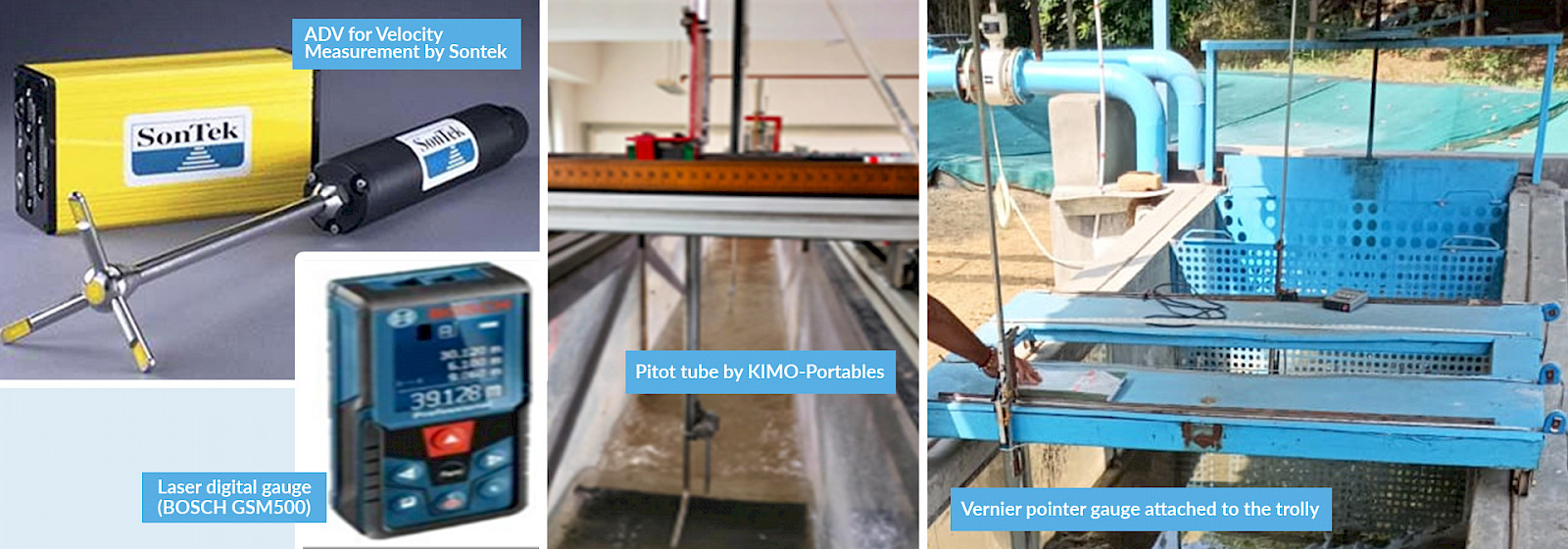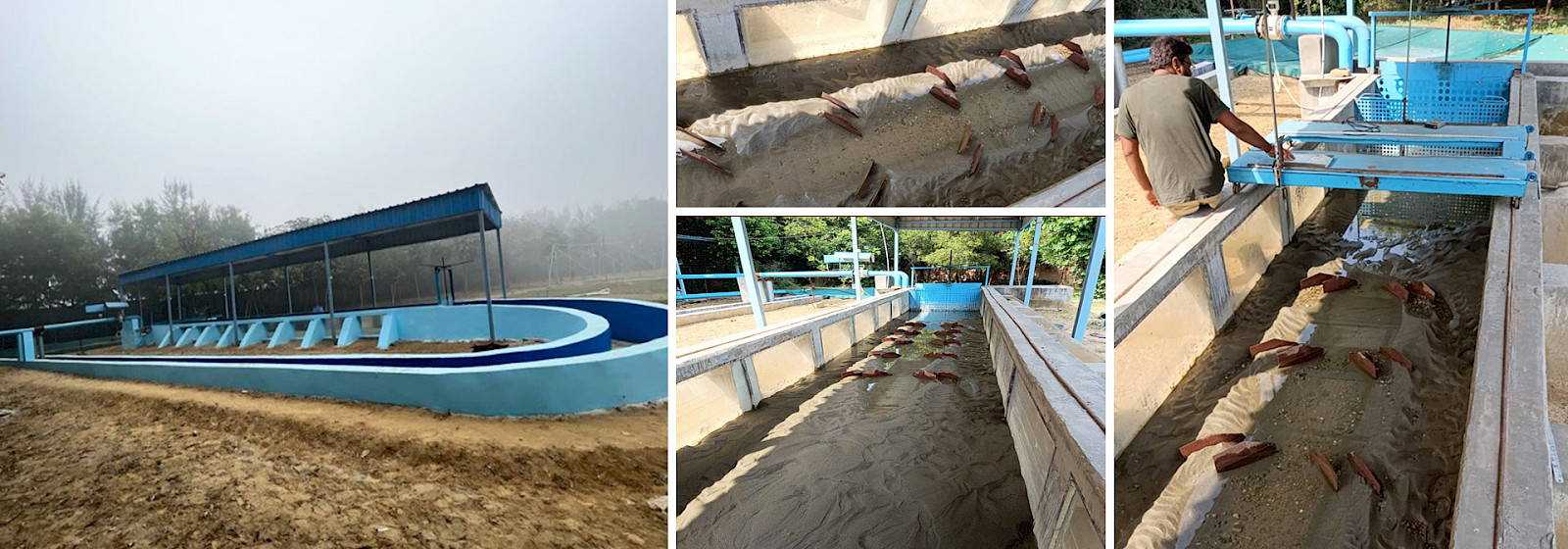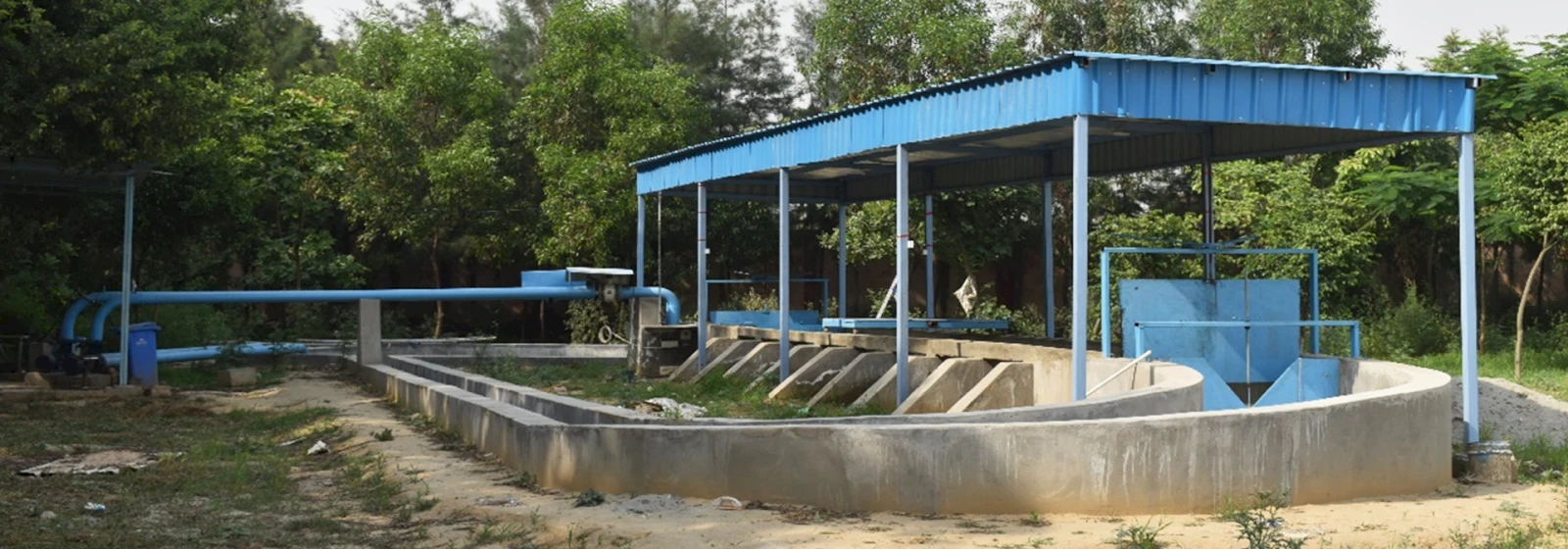River Hydraulics Laboratory
India being endowed with a vast river network; primary settings is conducive for growth of inland water transport (IWT). The navigation logjams could be nullified by providing low-cost, sustainable, and climate resilient all-weather fairway to commercial end-users on dependable terms. Mass cargo transport capacity at cheaper cost is the prime advantage of IWT over other competing transportation modes and this favourably reflects on commercial pricing of manufactured goods which elevates the competitiveness of export products in international markets.
Markedly, it should be underlined here that technology for low-cost eco-friendly navigation fairway development calls for a skilled and pragmatic synthesis of complex multi-disciplinary knowledge domains, transcending beyond the conventional fluvial hydraulics, eco-hydrology, water resources, hydro-biology. In the above context, research focus will be on:
- Maintaining minimum water depth
- River channelization
- Develop and maintain fairway on sustainable basis without exclusively relying on recurrent large scale dredging operations by incurring substantial recurring expenditure Irrigation and water security.
- Development of low-cost riverbank protection techniques such as Jack Jetty, CHEVRON, submerged vanes, bank vegetation etc.
- Study of hydraulic design and operational issues in hydraulic structures such as bridges across rivers, guide bunds and river training works.
- Study of turbulent and secondary flows that are liable for sediment transport process in open channel.
- The emerging technologies such as remote sensing and data analysis tools will be used in the above said focused research with domain knowledge. The main aim of the research will be to come up with the solutions that can implemented for navigation channel development and river bank protection.
Laboratory Resources and Infrastructure
River Engineering field laboratory has been developed at Shiv Nadar Institution of Eminence, Delhi-NCR that includes an extensive research facility for experimentation on river water management.
For research studies on river water management and complex geophysical flow phenomena, a field experimental flume has been created. The size of the flume is 15 m long, 1.5 m wide and 1 m deep. A recirculating channel of 20 m is also created to transfer the flowing water to the reservoir. With this flume facility, it is feasible to study the following aspects.
- Sediment transport processes in straight and meandering rivers
- Dam safety
- Inland navigation
- Riverbank protection
- Flow over grade-control structures (spillway and weir)
- Scouring around the hydraulic structure
- Turbulence in rivers under the influence of gravels and vegetation, etc.
The laboratory is equipped with:
- Water storage tank: A water reservoir of 9 m long, 6 m wide, and 2 m deep is constructed to store the water. Two outlet pipes are connected to the tank to take the water from the reservoir to the flume with the help of a submersible pump.
- Pump: Two pumps are used to transfer the water to the field flume with an adequate rate without any interruptions. The efficiency of two pumps is 10 HP each.
- Flow meter: Two flow meters are used to regulate the flow rate of the water that goes into the flume for experimental work. Each flow meter has a capacity to pass 120 l/s of water.
- A Settling chamber to conduct flow measurement or parameter monitoring. Besides, an Inlet gate and honeycomb structure are provided to control and dampen the perturbation of water generated due to vibration.

Equipment Facility
Different equipment are being used to measure and record the water and bed topography in the experimental field flume using different digital gauges before and after the experimentation. The facility is equipped with field research equipment such as:
Acoustic Doppler velocimetry (ADV): It is engineered to instantly record velocity components at a single location with a relatively high frequency. It accomplishes this by measuring the velocity of particles within a remote sampling volume based on the Doppler shift effect. The utilization of the Doppler shift effect allows for precise measurement of particle velocities in the fluid, contributing to a comprehensive analysis of fluid dynamics.
Pitot static tube: This probe concurrently assesses both stagnation pressure and static pressure, providing the essential parameters for calculating the flow speed. This is mainly used to measure water velocity in our open channel flow experiments.
Laser digital gauge: A depth gauge is an instrument for measuring depth below a vertical reference surface. It provides accurate information for an uneven surface, such as the nonuniform distribution of the sedimented surface.
Manual vernier pointer gauge: A depth gauge is an instrument for measuring depth below a vertical reference surface. It is helpful for measuring the water surface profile.

Images From the Lab

Doctoral Research Students
- Vikalp Chauhan (July 2019 - present)
- Nishank Agrawal (August 2021 - present)
- Sumit Kumar Giri (January 2023 - present)
